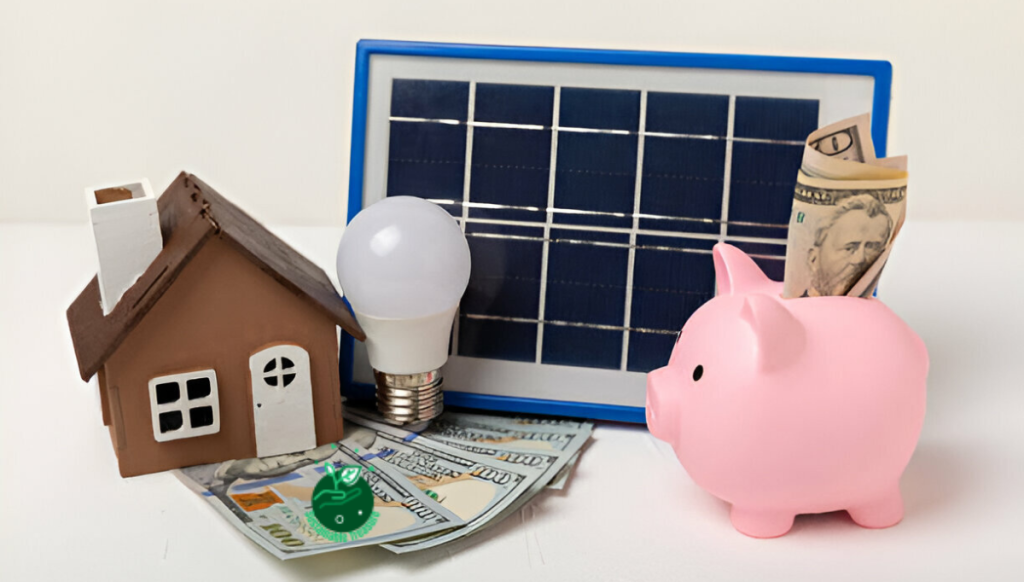Table of Contents
Are you considering investing in residential solar panels for your home? The answer lies in understanding the return on investment (ROI) analysis.
As a conscientious homeowner, I recognized the importance of embracing sustainable energy solutions not only for the environment but also for long-term financial benefits.
My journey began when I witnessed the escalating electricity bills, draining my hard-earned savings.
Determined to find a solution, I delved into researching solar panel installations, backed by credible sources and expertise in the field.
Through an emotional rollercoaster of uncertainty and skepticism, I discovered the transformative power of ROI analysis. It provided a comprehensive evaluation of the investment, factoring in costs, savings, and potential returns.
In this article, I’ll guide you through the intricacies of ROI analysis, empowering you to make an informed decision about harnessing the sun’s energy for your home.
Understanding ROI Analysis

ROI analysis is a financial calculation that helps you determine the profitability of an investment over a specific period. When it comes to residential solar panels, the ROI analysis takes into account the initial cost of installation, ongoing maintenance expenses, and the potential savings on your electricity bills. By comparing these factors, you can assess whether the investment will pay off in the long run.
Factors Affecting ROI for Residential Solar Panels
Several factors influence the ROI of residential solar panel installations, including:
- Location and Sunlight Exposure: The amount of sunlight your area receives directly impacts the energy production potential of your solar panels. Regions with higher sun exposure generally yield higher returns.
- System Size and Energy Needs: The size of your solar panel system and your household’s energy consumption play a crucial role in determining the potential savings and, consequently, the ROI.
- Incentives and Rebates: Many governments and utility companies offer incentives, tax credits, or rebates to encourage the adoption of solar energy. These incentives can significantly improve your ROI by reducing the initial investment cost.
- Financing Options: Various financing options, such as loans, leases, or power purchase agreements, can affect the upfront costs and long-term expenses associated with solar panel installation.
Calculating ROI for Residential Solar Panels
To calculate the ROI for residential solar panels, follow these steps:
- Determine the Initial Investment: This includes the cost of purchasing and installing the solar panel system, as well as any necessary permits or inspections.
- Estimate Annual Energy Savings: Calculate the amount you typically spend on electricity each year and subtract the estimated annual energy production of your solar panel system.
- Consider Ongoing Maintenance Costs: Factor in the costs associated with regular maintenance, repairs, and potential replacements over the system’s lifespan.
- Apply Incentives and Rebates: Subtract any applicable incentives, tax credits, or rebates from the initial investment cost.
- Calculate the Payback Period: Divide the net initial investment (after incentives and rebates) by the annual energy savings to determine how long it will take to recover the initial investment.
- Determine the ROI Percentage: Calculate the total savings over the system’s lifespan and divide it by the net initial investment. Express the result as a percentage to obtain the ROI.
Real-Life Examples
To better understand the ROI of residential solar panels, let’s consider a few hypothetical scenarios:
Example 1: Average Household
| Factor | Value |
|---|---|
| Initial Investment | $15,000 |
| Annual Energy Savings | $1,200 |
| Incentives/Rebates | $3,000 |
| Net Initial Investment | $12,000 |
| Payback Period | 10 years |
| ROI (over 25 years) | 50% |
In this example, an average household with a $15,000 initial investment and $1,200 in annual energy savings could expect to recover their net investment of $12,000 within 10 years. Over the 25-year lifespan of the solar panel system, they would achieve an impressive 50% ROI.
Example 2: High Energy Consumption Household

| Factor | Value |
|---|---|
| Initial Investment | $20,000 |
| Annual Energy Savings | $2,400 |
| Incentives/Rebates | $4,000 |
| Net Initial Investment | $16,000 |
| Payback Period | 6.7 years |
| ROI (over 25 years) | 75% |
For households with higher energy consumption, the ROI can be even more attractive. In this scenario, with an initial investment of $20,000 and annual energy savings of $2,400, the payback period is reduced to 6.7 years. Over the 25-year lifespan, the household would achieve an impressive 75% ROI.
Environmental Impact and Intangible Benefits
While the financial aspect is crucial, it’s essential to consider the environmental impact and intangible benefits of residential solar panels.
By generating clean, renewable energy, you contribute to reducing your carbon footprint and promoting a sustainable future. Additionally, the long-term energy independence and potential increase in property value can offer further advantages.
FAQs

What Is The Average Return On Investment (Roi) For Residential Solar Panels?
The average ROI for residential solar panels can vary significantly depending on factors such as location, system size, electricity rates, and available incentives. However, many homeowners can expect to achieve a ROI between 10% and 20% over the lifespan of the solar panel system, which typically ranges from 20 to 30 years.
How Long Does It Take To Recoup The Initial Investment In Solar Panels?
The payback period, or the time it takes to recoup the initial investment, can range from 5 to 15 years on average. This timeframe is influenced by factors like the system cost, energy consumption, and local electricity rates. Areas with higher electricity costs and abundant sunlight tend to have shorter payback periods.
Are There Any Government Incentives Or Tax Credits Available For Installing Solar Panels?
Yes, there are various incentives and tax credits available at the federal, state, and local levels to encourage the adoption of solar energy.
The federal government currently offers a 26% tax credit for residential solar panel installations, which can significantly reduce the upfront costs. Additionally, many states and municipalities offer their own incentives, such as rebates, tax exemptions, or net metering programs.
How Does Net Metering Work, And How Can It Benefit Solar Panel Owners?
Net metering is a billing mechanism that allows solar panel owners to send excess electricity generated by their system back to the utility grid and receive credits on their electricity bills.
This means that when your solar panels produce more energy than your household consumes, the excess energy is fed into the grid, and you are credited for it on your next bill. Net metering can significantly reduce your overall electricity costs and improve the ROI of your solar panel investment.
Can Solar Panels Increase The Value Of My Home?
Yes, installing solar panels can potentially increase the value of your home. Several studies have shown that homes with solar panel systems tend to sell for higher prices compared to similar homes without solar panels. This is because buyers often perceive solar panels as an attractive feature that can lead to long-term energy savings and environmental benefits.
How Long Do Residential Solar Panels Typically Last?
Most residential solar panels are designed to last between 25 and 30 years, with minimal degradation in performance over time. However, the lifespan can vary depending on the quality of the panels, installation, and maintenance practices. Many reputable solar panel manufacturers offer warranties ranging from 20 to 25 years, providing additional protection for your investment.
Can I Install Solar Panels Myself, Or Do I Need Professional Installation?
While it is technically possible to install solar panels yourself, it is generally recommended to hire professional installers. Professional installers have the necessary expertise, training, and certifications to ensure a safe and efficient installation that complies with local building codes and regulations. Additionally, most solar incentives and rebates require professional installation to qualify.
How Much Maintenance Do Residential Solar Panels Require?
Residential solar panels require minimal maintenance once installed. It is recommended to have the system inspected and cleaned annually to ensure optimal performance.
This typically involves cleaning the panels to remove dirt, debris, or bird droppings that may accumulate over time. Additionally, periodic monitoring and maintenance of the inverter and other system components may be necessary.
Conclusion
Investing in residential solar panels is a decision that requires careful consideration of the ROI analysis. By understanding the factors that influence the return on investment, you can make an informed choice that aligns with your financial goals and environmental values.
With the potential for substantial long-term savings and a positive impact on the planet, residential solar panels can be a wise investment for homeowners seeking a sustainable and financially rewarding future.
Image: Credit Istocks



